#eric cucchi
Text
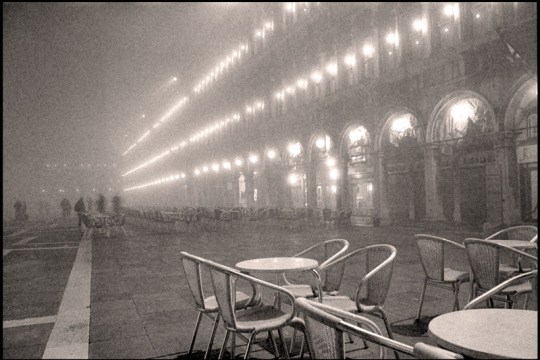
Venise, Venezia
413 notes
·
View notes
Text
Valentino Zeichen (e se i Diari fossero il suo capolavoro?) ci dimostra che i poeti italiani sono maliziosi e pettegoli. Meglio girare alla larga…
Ho conosciuto l’opera di Valentino Zeichen a Milano, su consiglio del poeta Alberto Pellegatta – un poeta vero, perciò raro. Mi consigliò di leggere, assolutamente, Metafisica tascabile, pubblicato da Mondadori. Quella poesia non mi emozionò, me ne ritrassi, irritato. Il secondo consiglio di Pellegatta, Biografia sommaria, Milo De Angelis, agì in modo contrario, lo trovai più consono, mi vestiva meglio.
*
Quando ho conosciuto Valentino Zeichen, in seguito a una picaresca avventura nell’allora Rai Futura, a Roma, ne apprezzai la verve, la battuta salata. “Mi sembrano le poesie di un ottantenne, insomma, mi sembra il libro definitivo di un millenario millenarista che abbia già vissuto tutto”, mi disse, dopo aver letto alcune poesie che avevo raccolto in un libro, L’era del ferro. Avevo 28 anni, lì per lì mi parve un complimento. Il seguito del nostro incontro è stato narrato, con sfoggio grottesco e vespertino cinismo, da Massimiliano Parente, nel romanzo Contronatura, allora pubblicato da Bompiani e ora in Trilogia dell’inumano (La Nave di Teseo, 2017).
*
Valentino Zeichen pareva un santo della poesia: ritenuto tra i poeti più importanti del Paese, fin dall’esordio (Area di rigore, era il 1974, con quella benedizione di Elio Pagliarani che lo definì “Un Gozzano dopo la Scuola di Francoforte”), e pubblicato come tale (con Guanda, Mondadori, Fazi), viveva, lo dicevano tutti, in una casa-baracca. Ascoltando, mi chiedevo perché, al posto di parlare con compiacimento del poeta che viveva in una baracca e che andava a cena da Tizio e da Caio, non lo si aiutasse, qualora avesse voluto, a trovare altra sistemazione. C’era una specie di anacronistica aristocrazia nel poeta che vive in una baracca: una nobiltà vissuta da Zeichen e ancor più goduta dai suoi più o meno apparenti amici.
*
Hanno continuato a non piacermi le poesie di Zeichen, augustee, ironiche, di una intelligenza fuori tempo – più prossima a Domiziano che alla Roma parlamentare – che di certo stuzzicava i pettegoli mecenati del poeta. Mi convinceva, piuttosto, il poeta in sé, la sua presenza, perfino le sbandate narcisistiche, i giudizi decadenti. Per me, voglio dire, i diari di Zeichen – il poeta in cui tutti ammiravano quello che avrebbero voluto essere senza averne il coraggio, basta lui – che Fazi ha cominciato a pubblicare dallo scorso anno sono l’opera autentica, lo zenit del poeta, la sua poetica, lo scintillio del talento.
*
Questo Diario 2000 (Fazi, 2019), ad esempio, si legge con fatale godimento: del giorno il poeta, rapace, sintetizza l’oro e l’ombra, l’ambiguo e il triviale. Vivere da poeta in baracca è a volte imbarazzante, altre divertente. Zeichen, che come i poeti d’epoca imperiale è stipendiato da qualche mecenate, ne ha anche loro: “Mi ha telefonato la mia mecenate e vuole sapere il tono dei commenti dopo la festa data per il mio libro. E anche vedere qualche riscontro della mia notorietà ‘presunto’, sulla stampa quotidiana. Un simile investimento deve avere un tornaconto d’immagine”.
*
I giudizi sono ostinatamente frollati nel ricino, per fortuna. “A proposito della poetessa Antonella Anedda; una saprofita letteraria che si nutre dei russi, i più sventurati scrittori e poeti di questo secolo. Ma una poesia fatta, più o meno, di onesto dolore, può bastare?”. A proposito di Alda Merini: “la rastrella-premi, l’ex ospite di manicomi che intenerisce i giurati”. A proposito di Roberto Mussapi: “Un poeta? Forse, ma soprattutto un gran traffichino. Lo osservavo durante lo spoglio delle schede di voto della giuria popolare [si fa riferimento al “premio Camaiore Poesia 2000”, ndr]; aveva un’espressione ancora fiduciosa, distanziato da una lunghezza o due dalla trionfatrice. Ma subito dopo lo spoglio, caduta la speranza di ribaltare il risultato, la sua accurata abbronzatura si è fatta terrea”.
*
Al contrario di Alda Merini, Zeichen non riesce a intenerire i giurati. “9 milioni dai troppi zeri, questo era l’ammontare del premio Gatto, assegnato al vincitore Maurizio Cucchi. Mi confida F. Cordelli, giurato e sostenitore del mio libro Ogni cosa a ogni cosa ha detto addio, che fra le motivazioni a sostegno della mia casa c’era anche quella sulle mie condizioni economiche difficili, perciò Franco era per l’assegnazione del premio a me. E Alba Donati ha riferito a Franco la reazione di Cucchi: ‘E che dobbiamo pagare noi per lui perché ha pochi soldi?’”. Al di là della pochezza, lo sketch ci fa capire che ai premi letterari, come supponiamo, di tutto si parla fuorché dei libri. Se uno è miliardario e poeta eccellente, che vinca: non dovrebbe contare il conto in banca ma il genio sovrano.
*
Frigna spesso, Zeichen. Quando accusa il premio Viareggio, “banda di mafiosi comunisti, capeggiata da Cesare Garboli e Giovanni Giudici”, ne fa non tanto una questione etica (“non rispetta nessuna oggettività basata sulle valutazioni critiche delle opere, avvalorate dalle recensioni”), ma privata: voleva vincerlo lui. In calce, sputtana De Signoribus, “modesto… onesto poeta delle Marche”. Il livore di Zeichen – espresso, sempre, con una scrittura cristallina, spoglia, da moralista francese – è significativo: non altro è la poesia italica, un piagnisteo di autentici poveracci.
*
A volte, ripeto, si assiste alla marziana serenità di un poeta latino, risolto in un insano stoicismo (“Stanotte vado a letto senza cenare. Digiuno dietetico, precauzione igienica, purificazione? Definizioni insensate per un gesto casuale. La verità è che non ho niente da mettere sotto i denti”). Altre volte, a implacabili rivelazioni: “Il destino del poeta è: consegnare le chiavi della perfezione estetica alla morte, che tutela l’immortalità della bellezza delle forme, respingendo le logoranti ingiurie del tempo. La morte è la banca della bellezza, vedasi le banche divenute vere e proprie pinacoteche”.
*
Verso i mecenati era gentile, ma mai inchinato, Zaichen. Sapeva che sono loro, i benestanti, a essere in debito con lui, con il poeta. Egli nutre la loro vuota esistenza, loro non fanno che riempirgli, a volte, lo stomaco.
*
Quando scrive del suicidio della sua mecenate, Lita, ne scrive come chi sa che si muore per una voluttà, per uno sfarfallio di disperazione, per una gioia malriposta, per una cattiva interpretazione: e chi te lo fa fare? “Domenica, nelle prime ore pomeridiane, è mancata l’amica Lita, la mia cara mecenate si è sparata alla tempia un colpo di calibro 38, ha ucciso quello che era rimasto vivo di lei. A seconda dell’età in cui ci si uccide, tenuto conto della durata di una vita media, si ammazza solo una percentuale variabile della propria vita. Lei ricercava in ogni cosa la compiutezza formale, ed esigeva un perfezionismo attivo da tutte le persone che le erano vicine; dal vestiario all’espressione verbale, era un continuo invito a superarsi”. Ci si supera fino al supremo sparo.
*
L’editore, in calce, pubblica Ogni cosa a ogni cosa ha detto addio, il libro poetico del 2000. Forse a conferma che la vera opera di Zeichen, che anche quando è crudele lo è con serenità narrativa, è il diario.
*
Pensieri che paiono scritti da Orazio, quasi a dire che la poesia uncina i millenni, il poeta è un fiume. “Ho nuovamente riparato il tetto, e provvidenzialmente viene a piovere per collaudare la tenuta. Giorni fa c’era già stato un breve acquazzone, e l’acqua gocciava dal tetto. Adesso piove insistentemente, è una pioggia fitta e regolare che si infiltra là dove ho riparato; è un’acqua che ha tutto il tempo per pensare”.
*
Più che altro, viene fuori una idea della poesia italiana come una cattedrale di gossip, una milizia di malizie, una folla di mercenari proni al proprio tornaconto. Un inferno volgare, un artificio di melma, dove Zeichen sguazza con la sagacia di Marziale, ricco – va detto – della propria povertà, brandita ad ascia. Viene da pensare – e di questo sono grato, post-mortem, a Valentino – che se è questa la poesia italiana e il suo sotterfugio e il suo sobborgo, meglio adempiere l’esilio, scrivere su frontoni di pietra e condividere il verbo con gli alberi, la luce, il vento. (d.b.)
*In copertina: Valentino Zeichen (1938-2016) secondo Eric Toccaceli
L'articolo Valentino Zeichen (e se i Diari fossero il suo capolavoro?) ci dimostra che i poeti italiani sono maliziosi e pettegoli. Meglio girare alla larga… proviene da Pangea.
from pangea.news https://ift.tt/3298ARI
1 note
·
View note
Photo





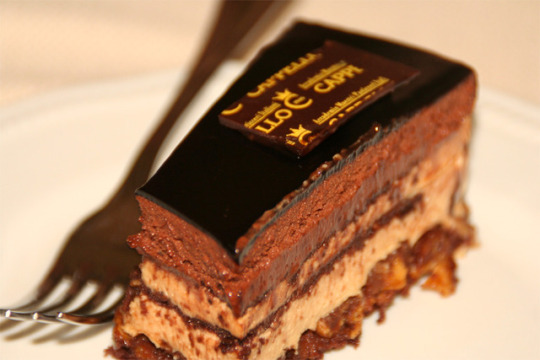
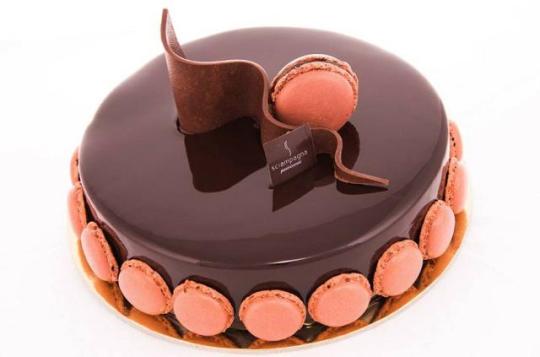



Sfinci di san Giuseppe, Tortine pasticceria Sciampagna, cannoli, granita caffè con panna e brioscia, gelo al limone pistacchi e cioccolato, torta sette veli pasticceria Capello, torta pasticceria Sciampagna, Torta pasticceria Spinnato, cassata pasticceria Irrera, cioccolato Antica Dolceria Bonaiuto Modica.
VISITING SICILY - THE SUN TASTE - Do not visit Sicily if you do not eat the sicilian desserts. You have to take this seriously because food in Sicily is very important and desserts are the most important part of every lunch and dinner. Eating in Sicily is not just eating, but a real social activity. There is no important event in a Sicilian family that should not be celebrated or remembered by a lunch or dinner. Those who are invited to lunch must not only avoid to eat three days in advance to make room for all that they will have to eat, but have a duty to bring sweets and if these sweets, for unfortunate event they will not be good, for the rest of your life it will always be remembered as your mortal sin. Every religious Party has its own special sweets: St. Joseph, St. Martin, St. Agatha, Easter, Christmas, Carnival, the day dedicated to the dead people, every little party has a sweet that is only done on that occasion because it is not a party if there isn’t that specific sweet. So you have to sacrifice yourself and visiting Sicily you have to eat all the desserts you can, those on the street or homemade (granita, ice cream, ice cream with croissants, giuggiulena, nougat, honey biscuits, rewards, sfinci, fravioli, u pupu cull 'ovu) and those of the pastry (cassata, cassatine, minne di Sant'Agata, olivelle, soft nougats, nougat of pistachios, cakes seven veils, babbà, sweets of the dead, pignolata, martorana fruit, lemon trunk, zuddi, parfait of almonds, biancomangiare, bucellato, African, savoia cake, San Martino biscuits, sweet peaches, queen biscuits, Elena pastas, minni di virgini, pigtails, gelo of orange or mandarin orange, cinnamon, watermelon, Tetù and Tetò, mpanadigghi, cuddureddi, Petralla's pegs, Bersaglieri, Cassatelle di Agira, Santa Lucia's bed, Aniseed biscuits, sighs of a nun, Marsala's Spagnolette, almond cakes, curly biscuits, piparelli and all the others and all the other hundreds of sweets that I am not able to write here but that you can find on this site https://www.dolcisiciliani.net/)
VISITANDO LA SICILIA - IL GUSTO DEL SOLE - Non visiti la Sicilia se non mangi i suoi dolci. Devi prendere la cosa seriamente perchè il cibo in Sicilia è importantissimo ed i dolci sono la parte più importante di ogni pranzo e cena. Mangiare in Sicilia non è solo nutrirsi, ma una vera attività sociale. Non c’è evento importante in una famiglia siciliana che non debba essere festeggiato o ricordato a pranzo o a cena. Chi è invitato a mangiare non solo deve digiunare tre giorni prima per fare posto a tutto quello che dovrà mangiare, ma ha il dovere di portare dei dolci e se questi dolci, per malaugurato caso non saranno buoni, per tutto il resto della sua vita gli sarà sempre ricordato come un peccato mortale. Ogni festa ha il suo dolce particolare: San Giuseppe, San Martino, Sant’Agata, Pasqua, Natale, Carnevale, la ricorrenza dei morti, ogni più piccola festa ha un dolce che viene fatto solo in quell’occasione perchè non è festa se non vi è un dolce. Quindi ti devi sacrificare e visitando la Sicilia devi mangiare tutti i dolci che puoi, quelli di strada o fatti in casa (granite, gelati, gelati con la brioscia, giuggiulena, torrone, biscotti al miele, rispeddi, sfinci, fravioli, u pupu cull’ovu) e quelli della pasticceria (cassata, cassatine, minne di Sant’Agata, olivelle, torroni molli, torroni di pistacchi, torte sette veli, babbà, dolci dei morti, pignolata, frutta martorana, tronco al limone, zuddi, parfait di mandorle, bianco mangiare, bucellato, africano, torta savoia, biscotti di san Martino, pesche dolci, biscotti regina, paste Elena, minni di virgini, treccine, gelo all’ arancia al mandarino, alla cannella, all’anguria, Tetù e Tetò, mpanadigghi, cuddureddi, cucchie di Petralla, bersaglieri, Cassatelle di Agira, la cuccia di Santa Lucia, Biscotti all’anice, sospiri di monaca, le spagnolette marsalesi, torte alle mandorle, biscotti ricci, piparelli e tutti gli altri e tutti gli altri centinaia di dolci che non riesco a scriverti ma che puoi trovare su questo sito https://www.dolcisiciliani.net/).
Per aiutarti nel duro impegno di scoprire i dolci siciliani ti allego l’elenco di quelle che vengono considerate le migliori pasticcerie siciliane.
To help you in the hard work of discovering the Sicilian sweets I am attaching the list of those that are considered the best Sicilian pastry shops.
Caffè Sicilia - Corso Vittorio Emanuele III, 125 Noto (SR)
Pasticceria Irrera - Piazza Cairoli, 12, Messina
Antica Dolceria Bonajuto - Corso Umberto I, 159, Modica (RG)
Pasticceria Eden - Via Nuova Granatari, Torre Faro (Messina).
I Dolci di Nonna Vincenza Piazza San Placido, 7 Catania
Pasticceria Di Pasquale corso V. Veneto, 4 Ragusa
Pasticceria Cappello via Colonna Rotta, 68 Palermo
Pasticceria Fiasconaro piazza Margherita, 10 Castelbuono (Pa)
Al Caffè del Corso via Ungheria, 21, Chiusa Sclafani
Da Alfredo – lungomare Lingua,a Salina (Me)
Pasticceria Colicchia via delle Arti, 6 Trapani
Maria Grammatico via Vittorio Emanuele, 14 Erice – Trapani
De Luca10. Bar Gelateria De Luca – Via Nazionale, 208 Vill. Briga Marina (San Paolo)
Eurobar13. Eurobar – Via Giuseppe Garibaldi, 11/13 Dattilo, Trapani
Antico Caffé Spinnato - Palermo
Pasticceria Carmelo Sciampagna - Marineo (Pa)
Pasticceria Oscar – Via Mariano Migliaccio, 39 Palermo
Bar Costa15. Bar Costa – Via Gabriele D’Annunzio, 15 Palermo
Pasticceria Savia - Via Etnea 300, Catania
Pasticceria Ficarra – Via Umberto 69 , Catania
Pasticceria Verona e Bonvegna – Via Asiago 60, Catania
22 notes
·
View notes
Text
Episode 284
Comic Reviews:
Future State: Aquaman 1 by Brandon Thomas, Daniel Sampere, Adriano Lucas
Future State: Batman/Superman 1 by Gene Luen Yang, Ben Oliver, Arif Prianto
Future State: Dark Detective 2 by Joshua Williamson, Giannis Milonogiannis, Jordie Bellaire
Future State: Legion of Super-Heroes 1 by Brian Michael Bendis, Riley Rossmo, Ivan Plascencia
Future State: Suicide Squad 1 by Robbie Thompson, Javier Fernandez, Alex Sinclair, Jeremy Adams, Fernando Pasarin, Oclair Albert, Jeromy Cox
Future State: Superman vs. Imperious Lex 1 by Mark Russell, Steve Pugh, Romulo Fajardo Jr.
Batman: Black and White 2 by Tom King, Mitch Gerads, Sophie Campbell, Gabriel Hardman, Corinna Bechko, Dustin Weaver, David Aja
Eighth Immortal 1 by Jake Murray, Alice Li Barnes, Letter Squids
Warcorns: Combat Unicorns For Hire 1 by Garret Gunn, Kit Wallis
Wax 1 by Diane Huffman, Claudia Cangini
Ferryman 1 by Daniel Bell
Stray 1 by Eric Gay, Andy Poole
Riverdale Presents: Southside Serpents 1 by David Barnett, Richard Ortiz
Additional Reviews: Gigantic by Remender and Nguyen, Game of Thrones, Two Weeks to Live, What We Do in the Shadows, WandaVision
News: Heroes Reborn, Potter shows to HBO Max, Bendis no longer DC exclusive, Kong and Tomb Raider animes from Legendary on Netflix, Spider-Ham graphic novel, Sandman casting, Molly Ostertag's Witchboy to Netflix as animated musical, Batman and Robin and Howard graphic novel, Titans TV casting, some new film
Comics Countdown:
Colonel Weird: Cosmagog 4 by Jeff Lemire, Tyler Crook
Something is Killing the Children 14 by James Tynion IV, Wether Dell'Edera, Miquel Muerto
Batman: Black and White 2 by Tom King, Mitch Gerads, Sophie Campbell, Gabriel Hardman, Corinna Bechko, Dustin Weaver, David Aja
Daredevil 26 by Chip Zdarsky, Marcho Checchetto, Mike Hawthorne, Adriano Di Benedetto, Marcio Menyz
Department of Truth 5 by James Tynion, Martin Simmonds
We Only Find Them When They're Dead 5 by Al Ewing, Simone Di Meo, Mariasara Miotti
Strange Adventures 8 by Tom King, Mitch Gerads, Doc Shaner
Other History of the DC Universe 2 by John Ridley, Giuseppe Camuncoli, Andrea Cucchi, Jose Villarrubia
Nailbiter Returns 9 by Joshua Williamson, Mike Henderson, Adam Guzowski
Future State: Dark Detective 2 by Mariko Tamaki, Dan Mora, Jordie Bellaire, Joshua Williamson, Giannis Milonogiannis
Check out this episode!
0 notes
Link
ANCONA – A pochi giorni ormai dalla festa più bella dell’anno, biANCONAtale entra da domani, 22 dicembre nel cuore dell’atmosfera natalizia con eventi e manifestazioni per tutti.
Venerdì 22 dicembre. In centro per tutto il giorno, brani natalizi e non con “Il pianista fuori posto”. Itinerante anche la Pasquella di Varano, con i suoi cantori e musici della tradizione. Sotto l’albero di Natale di piazza Roma alle 18 ancora un appuntamento con CHRISTMAS JAZZ: sul palco Michele Samory e il suo quartetto Christmas in blues, in collaborazione con Ancona Jazz. La corale dei Giovani di ieri canterà per gli ospiti della residenza protetta per anziani “Benincasa” alle ore 16; alle 17 nella parrocchia di S.Paolo apostolo a Vallemiano, concerto della corale L’incontro di Torrette; alle ore 20 in piazza del Plebiscito M.J. Acoustic Trio in concerto (soul, r&b, canzone d’autore), in collaborazione con l’Accademia musicale di Ancona; alle ore 21 al teatro Sperimentale spettacolo Christmas Step. Servizio Baby parking nel pomeriggio in via degli Orefici
Sabato 23 dicembre. Molti gli appuntamenti sotto l’albero, in piazza Roma con i cantori delle scuole protagonisti: alle 11 il Coro delle scuole Maggini; a seguire, alle ore 12, il Coro della scuola Pie Venerini. Alle 18 grande concerto CHRISTMAS SINGER con le $ belle voci di Gaia Anglani, Mario Cacciani, Patrick Pambianco e Alessandra Losacco. Nella chiesa di S.Gaspare del Bufalo a Brecce Bianche alle 18,45 esibizione della Corale Les Amis-soprano Alessandra Rosciani, pianista Stefano Grassoni. Al Teatro delle Muse, infine- GOSPEL NIGHT , il tradizionale e popolare concerto di Natale a cura di Ancona Jazz con THE HARLEM VOICES featuring Eric. B, Turner.
Almeno 20 anni di esperienza nel mondo della live music, gli strepitosi componenti hanno cantato e suonato nei più prestigiosi gruppi gospel, soul e rock da Mariah Carey, a Yolanda Adams, da Shakira agli U2, solo per citarne alcuni. Il Pastore e leader del gruppo è Eric B.Turner, che ha cantato durante il ballo inaugurale della Presidenza di Barack Obama nel 2009. Da alcuni anni è lead singer negli attuali Temptations e Drifters, è attore e musicista in diversi musical di Broadway.
Domenica 24 dicembre- VIGILIA DI NATALE
PROGRAMMA BAMBINI
In piazza Roma, sotto l’albero alle 16,30 Corale Incontro di Torrette; alle 18 CHRISTMAS QUARTET – Zona Musica- Vanessa Chiappa voce, Davide Caprari pianoforte, Claudio Mangialardi contrabbasso e Marco Lorenzetti percussioni
PRESEPI
Lunedi 25 dicembre BUON NATALE A TUTTI !!!!!!
Martedi 26 dicembre
PRESEPI
Nella parrocchia di San Michele Arcangelo al Pinocchio, alle ore 18,30, esibizione della Corale Quinto Curzi
Mercoledi 27 dicembre. Alle ore 19 la Corale UNITRE diretta da Alessandra Capici terra un concerto nella parrocchia di Santa Maria dei Servi. Alle ore 21 al Teatro Sperimantale MUSI CHRISTMAS con i gruppi Mike Coacci Yellow Beat Random e Allievi del Liceo Musicale Rinaldini Ancona. Il concerto con ingresso a offerta pro AIRC e dedicato alla memoria di Roberto Rotelli.
IL NATALE DEI BAMBINI
Sabato 23 dicembre alle 16 davanti alla Fontana delle Tredici cannelle “Pupazzi di neve”, mercatino di artigianato artistico, tanti piccoli pupazzi da realizzare con la ceramica fredda, a cura della Luna e i Bambini. Alla stessa ora e fino alle 18 circa, poco distante, in piazza Roma “Arriva Babbo Natale” , quello vero dalla Finlandia, con la spettacolare parata degli Elfi (ore 17,00) per tutte le vie del centro (a cura di Fantasia sogno e Realtà). Santa Claus saluterà i bambini a bordo della sua “auto speciale” in giro per la Città e leggerà le letterine depositate dai bimbi nelle scorse settimane. Ancora alle 16, a Posatora, Spettacolodi burattini al teatro Pellidò.
Domenica 24- la vigilia- si replica alle ore 16 in piazza Roma, con Babbo Natale e il suo seguito dalle ore 10,30 alle 12,30 e dalle ore 17,30 alle 20,00 sarà a spasso per il centro per incontrare tutti i bambini. Alle ore 16.00 alle 17.30 saluterà i bambini a bordo della sua “auto speciale” in giro per la città.
Prosegue il Mercatino di Natale a piazza Cavour e lungo parte di corso Garibaldi, fino al 24 dicembre tutti i giorni dalle 9 alle 20; davanti alla fontana delle Tredici cannelle c’è invece A MANO LIBERA , mercatino artigianale artistico a cura de “La banda della magliaia”.
Per quanto riguarda i PRESEPI VIVENTI:
il 24 dicembre si potrà rivivere la notte di Natale dalle ore 22,30 presso la Parrocchia di san Giuseppe Moscati a Montedago, con replica il 26 dicembre alle 17,30 e alle 19,00. Stessi orari anche all’Epifania. Sempre la sera della vigilia verrà inaugurato il presepe meccanizzato della parrocchia di Santo Stefano a Montesicuro. L’allestimento resterà fino al 10 gennaio. Nel pomeriggio del 26 dicembre ci sarà la bellissima rievocazione della nascita di Gesù al Forte Altavilla di Pietralacroce e l’altrettanto emozionante presepe vivente, di lunga tradizione, a Candia.
PRESEPI D’ARTE:
Prosegue alla Mole Vanvitelliana la MOSTRA dei PRESEPI di Riccardo Pierini e dei altri artisti marchigiani. Resterà aperta fino al 10 gennaio. Fino al 7 gennaio invece si può ammirare la straordinaria mostra di PRESEPI NAPOLETANI, quest’anno allestita nella suggetsiva cornice della PINACOTECA PODESTI, a cura degli Amici del Presepe di Ercolano e Torre del Greco. Orari mart.-ven 16-19 e sab.-dom. 10-19. Ingresso libero
AI MUSEI CIVICI SI SEGNALA:
Dopo gli appuntamenti del 20 e 21 si replicano il 27 e 28icembre, ore 17:00
“Ancona a Mattoncini”
Laboratori in collaborazione con “Dadi e mattoncini”
Museo della Città
I bambini, le famiglie e tutti gli appassionati di Lego sono invitati al Museo della Città per il laboratorio “Ancona a Mattoncini”, realizzato in collaborazione con “Dadi e Mattoncini”. Una divertente attività, in occasione dell’esposizione di monumenti anconetani realizzati con le Lego! Ingresso: Piazza del Plebiscito. Quota di adesione € 7,00 – minori di 14 anni € 5,00. Prenotazione obbligatoria telefonando al numero 0712225047 o scrivendo a [email protected].
Venerdì 22 dicembre, ore 17:00
Visita “L’essenza dell’arte”
Pinacoteca Civica
Atteso appuntamento del Natale 2017 “L’essenza dell’arte”: visita esperienzale alla scoperta dell’arte con occhi, udito e olfatto. A ogni opera si associa un’essenza, un richiamo alla natura e agli elementi in essa rappresentati.
Ingresso biglietteria di Vicolo Foschi, n. 4. Quota di adesione € 8,00 (incluso il biglietto di ingresso). Prenotazione obbligatoria telefonando al numero0712225047 o scrivendo a [email protected].
Sabato 23 dicembre, ore 17:00
Visita “Cucchi e le tecniche incisorie”
alla mostra “Enzo Cucchi. Cinquant’anni di grafica d’artista”,
Mole Vanvitelliana
na speciale visita alla mostra “Enzo Cucchi. Cinquant’anni di grafica d’artista” presso la Mole Vanvitelliana, dal titolo “Cucchi e le tecniche incisorie”: un percorso alla scoperta dell’artista e delle tecniche incisorie. Quota di adesione: € 8,00 (la quota comprende il biglietto di ingresso). Prenotazione obbligatoria telefonando al numero 0712225047 o scrivendo [email protected].
Al Museo Omero continua fino al 14 gennaio “La tavola celeste”, installazione interattiva che reinterpreta quattrocento anni di studi del cielo, del tempo e della navigazione attraverso un tavolo artisticamente apparecchiato con oggetti da cucina di ogni specie.
Continua al Mercato delle Erbe la mostra fotografica di Dirk Vogel “Marche inside the beauty”, a cura di The Begin Collection con la collaborazione del Comune di Ancona e il supporto di UBI Banca. Un racconto per immagini, con particolare attenzione per i luoghi più nascosti e unici della regione. Visitabile dalle 8 alle 20 fino al 7 Gennaio.
Aperta la PISTA di PATTINAGGIO SUL GHIACCIO tutti i giorni in piazza Roma e anche, naturalmente la RUOTA PANORAMICA fino tarda sera , in piazza Roma.
VIABILITA’ e PARCHEGGI
Fruibili come sempre i Parcheggi degli Archi, Traiano, Cialdini e Umberto, gratuiti il 24 dicembre; sosta su aree blu scontata del 30 % (fino al 25 Dicembre), se pagata con l’App MyCicero. A disposizione per gli utenti dei parcheggi comunali due trenini. Il primo collega tutti giorni i parcheggi a Piazza Cavour, corso Stamira e Piazza Roma, con partenza dal parcheggio degli Archi ogni 35 minuti dalle 16 alle 20.
Solo sabato e domenica un secondo trenino congiunge piazza Cavour con il Viale e corso Amendola. La navetta natalizia sabato e domenica pomeriggio collegherà gratuitamente Piazza Ugo Bassi con il centro e il Viale: una corsa ogni 20 minuti dalle 16.30 alle 21.30.
The post BiANCONAtale, gli appuntamenti dal 22 al 27 dicembre appeared first on TM notizie - ultime notizie di OGGI, cronaca, sport.
0 notes
Text
La Notte di Suburra, il 14 dicembre festa all'Atlantico a Roma
L’emittente radiofonica romana Radio Rock 106.6, in collaborazione con Netflix e La Grande Onda, ha organizzato un imperdibile evento per gli amanti della buona musica e delle ‘tv series’. L’evento si terra il 14 dicembre all’Atlantico Live e l’ingresso sarà rigorosamente gratuito. Si prevede una serata totalmente incentrata sulla nota serie tv, con i live degli autori della sigla “7 vizi Capitale“: Daniele Coccia Paifelman – de Il Muro del Canto – e Piotta.
Il party ufficiale, organizzato per festeggiare il successo della prima stagione, sarà un susseguirsi di concerti, DJ set e saranno presenti gli attori della serie. Il tutto avrà inizio alle 21.30 con il live di Daniele Coccia Paifelman, già autore, cantante e fondatore de Il Muro del Canto, con il suo primo progetto solista appena pubblicato dal titolo "Il Cielo Di Sotto". Con lui la band in un live coinvolgente, dove le sonorità folk rock si uniscono alla poesia tradizionale. Sul palco con lui Eric Caldironi (chitarra), Alessandro 'Fisa' Marinelli (fisarmonica), Cristina Badaracco (voce), Leonardo Angelucci (chitarra e cori), Matteo Ercolani (basso) e Tommaso Guerrieri (batteria). Alle 22.30 live di Piotta, con la band al completo. Non mancheranno chitarre distorte, bassi slappati e ritmiche ruvide, dal rap al rock: questa la colonna sonora che unisce il pubblico più giovane ai supporter della prima ora. Durante lo show successi di massa come "La Grande Onda" o "Supercafone", ma, anche momenti più riflessivi e impegnati come "Barbara", finalista al premio Amnesty 2016 e la struggente "7 Vizi Capitale", ormai celebre sigla ufficiale di Suburra - La Serie distribuita in ben 192 paesi. La band è formata da Marco La Fratta (chitarra), Davide "Pad" Palmisano (basso), Claudio Cicchetti (batteria) e MarvelMex (cori). Saliranno sul palco come special guest assieme a Piotta, il rapper romano Amir, Grandi Numeri dei Cor Veleno per un omaggio al compianto Primo Brown, la giovane formazione reggae Inna Cantina, Marco Conidi dall'Orchestraccia, il talento delle rime Rancore e ospiti a sorpresa. Durante la serata è atteso poi parte del cast, per festeggiare la prima stagione di Suburra e rendere omaggio al successo di pubblico e critica della prima serie prodotta in Italia da Netflix. Parteciperanno all'evento Amnesty International che durante la serata promuoverà la maratona write4rights, raccogliendo le firme per sostenere gli appelli e Ilaria Cucchi con l'associazione Stefano Cucchi Onlus. DJ set aftershow a cura di Radio Rock con Tatiana Fabbrizio (Non-DJ Selecta) e Yakuza (Italian Stail), che proporranno una speciale selezione ispirata alla colonna sonora della serie e le playlist scelte appositamente in radio dagli attori del cast.
Read the full article
0 notes
Text
30 Unusual Photos You Have to Look at Twice
30 Unusual Photos You Have to Look at Twice
© Ivan Slosar
© Chloe Smith
© florian schaller
© Raccoon Photo
© Enrico Maniscalco
© John Fowler
© Alin Popescu
© Fabio Cucchi
© Donald Verry
© Sarah Lee
© Scott Laidlaw
© imgur.com
© kübra karaçizmeli
© Tom Magnum
© Gaetano Manitta
© Khush Savjani
© John Richter
© Eric F. Schetley
© Takaki Watanabe
© Patrick Wally
© pinterest.com
View On WordPress
0 notes
Text
Hyperallergic: The Use an Abuse of Paint: ‘Fast Forward’ at the Whitney
Eric Fischl, “A Visit To / A Visit From / The Island” (1983), oil on canvas, 84 × 168 inches (all photos by the author for Hyperallergic)
When was the last time you complained that a museum exhibition was too small?
Fast Forward: Painting from the 1980s is installed in the Whitney Museum of American Art’s light-filled 8th-floor gallery — arguably the most gorgeous viewing space of any museum in the city — but for the purposes of the exhibition, it is divided into three moderately sized rooms and a wide, narrow elevator lobby. I would like to have seen this show at least tripled in size across one of the sprawling galleries downstairs.
With the spare allotment of space, is the Whitney hedging its bets on the long-term significance of the work on display? The museum can be commended for its effort to place painting front and center, even as it derives the show’s title from the 1980s video revolution, which has absorbed most of the decade’s critical analysis, but the show feels like something of a missed opportunity. I believe that a case can be made for a deeper and wider examination of the period.
That said, the exhibition, like the decade it represents, is a mixed bag. In a sense, it serves as an institutional chaser for two scrappier, broader, and, taken together, richer examinations of the period that closed in late November, Paradise: underground culture in NYC 1978-84 at Stephen Harvey Fine Art Projects and Something Possible Everywhere: Pier 34 NYC, 1983–84 at the 205 Hudson Street Gallery of Hunter College.
At the Whitney, there are 23 large works hung one or two per wall, while a salon-style installation presents 16 smaller pieces from floor to ceiling. This is a mistake. At the press preview, the curators explained that they decided to display the works in this fashion because they wanted to get away from the “white box” and approximate the free-for-all hangings typical of East Village galleries and countercultural extravaganzas like The Times Square Show (1980).
The main problem with this idea — aside from its denial of the Whitney’s de facto white box ambiance — is that we go to museums to look into, rather than at, works of art. The crowded installations in the raw, stained, and smelly spaces where much of this art had its debut did not consist of the cream of the crop; the Whitney show does. This miscalculation suggests a fundamental misunderstanding that equates a painting with its image, but more on that later.
One service that the exhibition does perform is that it separates American painting of the period from its European counterpart, the transavanguardia whose sound and fury is all but synonymous with art of the ‘80s: Anselm Kiefer, Georg Baselitz, Jörg Immendorff, Francesco Clemente, Enzo Cucchi, Sandro Chia, Mimmo Paladino, the list goes on.
The resulting array of home-grown, almost entirely New York-based work seems lighter in two respects: the feeling that an enormous weight has been lifted, allowing the images of these artists to be seen on their own terms, and correspondingly, that there is something missing — a global dimension or a sense of historical awareness.
The other salutary effect is that the market heavyweights of the time have been set off in their own corners, affording a place in the sun for those who had once been shouldered aside by the Schnabel-Salle-Fischl juggernaut.
The exhibition opens with a fizzy blast of Neo-Pop: a billboard-size canvas by Kenny Scharf, “When the Worlds Collide” (1984), in oil and spray paint, hung against black-and-white vinyl wallpaper adapted from a mural that Keith Haring made for his Pop Shop (1986-2005) in downtown Manhattan.
The Scharf/Haring pairing, combined with Julia Wachtel’s “Membership” (1984), a painting that facilely juxtaposes kitschy greeting card imagery with a black-and-white rendering of matching African fertility figures, seems to signal that the Geist of the decade’s art was bent toward crowd-pleasing hijinks and elitist condescension.
But thankfully, on the opposite side of the exhibition entrance, the Haring wall takes a grittier turn with Jean-Michel Basquiat’s “LNAPRK” (1982), a graffitied, scrawled, and distressed canvas sporting grotesque heads and musical notes. Alongside the Basquiat hangs Haring’s maze-like untitled drawing (1983-84) in fiber-tipped pen on synthetic leather, evoking a Native American hide painting.
Installation view of “Fast Forward: Painting from the 1980s” (2017), Whitney Museum of American Art, New York
The three galleries are thematically arranged: politics; appropriation; and abstraction. The salon-style wall is located in the appropriation room, a correspondence that fits most but not all of the work. The same can be said for the larger paintings as well: an acrylic on canvas of a shuttered storefront, “Closed” (1984-85) by Martin Wong, hangs in the abstraction gallery, but isn’t abstract at all, and only two out of the five paintings in the politics room are overtly political: Leon Golub’s monumental “White Squad I” (1982) and Eric Fischl’s diptych of frolicking vacationers abutted against drowned and desperate refugees, “A Visit To / A Visit From / The Island” (1983).
It quickly becomes apparent, however, that even though a set of paintings may look well together, there can be fundamental differences among them, in both content and form — differences that don’t so much undermine the curatorial structure but speak to the artist’s ability to use the language of paint — to reinvent its application and to put across a construct of ideas.
The two above-mentioned canvases in the politics gallery offer distinct contrasts in attitude and painterly approach. For his depictions of Central American death squads — bands of indiscriminate killers who, with the support of the Reagan administration, spent much of the decade terrorizing the peasantry of Guatemala and El Salvador — Golub rethought the idea of the triumphal frieze, transferring the red oxide of Roman frescoes to his monochromatic fields, while incising his super-sized figures in scraped-down, ever-shifting layers of dark and light.
Golub has cast his gun-toting, khaki-clad thugs as the dominant characters in the scene, leaving their victims virtually anonymous, and all but forcing the viewer to identify with the perpetrators. This standpoint operates collectively and individually, underscoring the culpability of a free and prosperous electorate whose tax dollars are funneled to support atrocities south of the border, as well as the genetic propensity of the human species to abandon mercy and reason for animalistic, tribal instincts. In Golub’s cool-eyed worldview, evil prevails; there is no uplift beyond the painting’s mesmerizing formal strengths. The only vulnerability of power is the extent of its overreach.
Leon Golub, “White Squad I” (1982), acrylic on linen, with metal grommets, 120 × 210 inches
At its best, and “White Squad I” is among his most exceptional works, Golub’s art conveys thorny truths with a sophisticated, stratified sense of nuance that inflects but never tempers his paintings’ overwhelming force. Eric Fischl’s “A Visit To / A Visit From / The Island,” on the other hand, relates to Golub’s work in category but not in kind; instead of the collective responsibility of a democratic society to remain vigilant over the actions of its government, we are presented with limousine liberal guilt over indulging upper-middle-class lotus-eating in climes where the majority of the population is black, destitute, and hopeless.
In contrast to Fischl’s truly disturbing early work — in which prurient, self-lacerating subject matter is underscored by the artist’s attempts at realism via the “Bad Painting” aesthetic defined by the New Museum exhibition of the same name (curated by Marcia Tucker in 1978) — “A Visit To / A Visit From / The Island” is executed in a not-entirely-successful academic technique that possesses none of the material exploration evidenced in Golub’s scoured pigment or the sooty exactitude of Wong’s “Closed.”
While it is tempting to imagine one of its panels bedecked with the buttery lushness and clashing colors of Luisa Chase’s “Limb” (1981), which hangs on an adjacent wall, while the other is painted with the knowing trashiness of Walter Robinson’s borrowed pulp-novel cover art, “Baron Sinister” (1986) from the neighboring appropriation room, it is of course pointless to play “what if” with a firmly established artist’s oeuvre.
Still, in a museum exhibition concentrating on a decade that brought about, in the minds of critics and collectors at least, a revival of image-based painting, the fusion or disconnect that exists between the handling of the medium and the picture it generates deserves special attention.
Like the bits of celluloid that make up a film, the laying-on of paint skews our emotions and layers our perception. Despite the flashiness of Fischl’s diptych as a whole and the undeniable beauty of its portrayal, in the right panel, of black refugees emerging from a black sea under a lowering sky, the blatancy of the political message and the retro quality of the neo-Manet brushwork render it the most incurious work in the show.
Despite the emphasis on subject matter that the decade heralded, the most effective works are those that take painting apart and put it back together again, often leaving traces of the process in scars and ghosts across the surface.
Christopher Wool, “Untitled” (1990), enamel on aluminum, 107 7/8 x 71 3/4 inches
In Christopher Wool’s untitled enamel-on-aluminum painting from 1990, the black-stenciled words “RUN DOG RUN” split and shift down the length of the white surface — a juicy presence in itself augmented by a vestigial “R” from a painted-over “RUN” in the uppermost rank. It is a work that would seem to genuflect before the denatured terms and conditions of mechanical reproduction, but can be fully experienced only in person, a sly subversion of expectations that leads you to look deeper into painting, where the drips hold a sexual charge and swatches of dark blue appear seemingly out of nowhere.
Wool’s painting hangs in the appropriation room, but it feels misplaced there, even though its text comes from an exterior source; its modus operandi is instead the kind of garden-variety appropriation that has been practiced by modernists from Pablo Picasso to Jasper Johns — an instigation for formal inquiry.
The type of appropriation that prevailed in the ‘80s involved a wholesale repurposing of imagery as the work’s primary statement. It has since become a byword for the bulk of Neo-Conceptual art, but its experiment in painting, as manifested here, feels as hermetic as it did when it first hit the scene — despite its aim to reopen art to mass media and the breakneck speed of contemporary life. The paintings in the rooms on either side of the appropriation-based works feel fresh and inquisitive by comparison.
Moira Dryer, “Portrait of a Fingerprint” (1988), casein on plywood, 48 1/8 × 61 1/4 × 4 inches
The exhibition is drawn entirely from the Whitney’s collection, which explains some of its lacunae and odd choices. I was surprised that the curators selected, for the political room, “The Three Graces: Art, Sex and Death” (1981), a candy-colored send-up of a classical theme by Robert Colescott, rather than one of the artist’s many trenchant and disquieting satires on race. But when I checked the Whitney’s website, I discovered that, at least according to the information provided by the collection database, it’s the only Colescott that the museum owns.
To my mind, the salon-style wall is the most problematic aspect of the exhibition; the obstacles it places in the way of absorbing the art is especially self-defeating in light of the high quality of what is on display.
The combo of Joyce Pensato’s untitled mouse head from 1992 (more Ignatz than Mickey) and Elizabeth Murray’s shaped abstraction, “Druid” (1979), smack in the middle of the uppermost reaches of the installation, is an instant eye-magnet, but it would be so much more enriching to experience, in a larger show, these two idiosyncratic artists facing off in a room of their own.
I also wish I could have had a better look at Carroll Dunham’s antic, untitled painting in oil and graphite on wood veneer (1984); Rex Lau’s painted landscape on carved wood, “The Mountain Demons” (1980); and Nellie Mae Rowe’s fanciful, untitled depiction of a woman raising her yellow-gloved hands above her head, which the artist made in 1981, the year before she died at age 82.
And it would have been intriguing to revisit in depth the individualistic, at times bizarre early work of such artists as Jonathan Borofsky, Andrew Masullo, Ida Applebroog, Glenn Ligon, among others, whose inclusion on the salon wall seems to relegate them to a footnote in the larger picture.
One striking omission in the museum’s collection was brought to light by a collaborative lithograph, “The Feminization of Poverty” (1987) by Nancy Spero and Leon Golub, which hangs in the lower right-hand corner of the installation. A quick search of the collection revealed that this is the only work by Spero owned by the Whitney, which makes you hope that the database is incomplete (though the text above the website’s search engine invites us to “browse the full collection”).
Of course, you could fill a pocket-size phone book with the artists who were active during these years but are not included in the exhibition, even Peter Halley and Philip Taaffe, who achieved substantial critical acclaim and market success at the time. Perhaps it would have been more fitting for the Whitney to present Fast Forward as a rotating exhibition, like the wonderful Human Interest portrait show downstairs.
These caveats, however, should not detract from the museum’s efforts to shine a light on the importance of painting in an era that has proven deeply influential on succeeding generations of artists, both inspirationally and critically — an era, it should be kept in mind, whose reactionary policies, as destructive as they were, will be nothing compared to what we are about to undergo.
Perhaps this is why the abstraction room offers such solace and grace. These are paintings, based on the human body, botanical forms, and other sources, that sublimate a storm of emotions into transcendently formal terms, none more than Ross Bleckner’s “Count No Count” (1989) in oil and wax on canvas, a glimmering memorial to those lost to the AIDS epidemic.
No less poignant are Carlos Alfonzo’s “Told” (1990) — an abstracted silhouette of a despairing figure made the year before the artist’s AIDS-related death at the age of 41 — and “Portrait of a Fingerprint” (1988) by Moira Dryer, a green-and-red abstraction in casein on plywood.
Dryer’s life was also cut short, by cancer, when she was 35. Her composition is smeared by solvent on three sides, turning her edge-to-edge horizontal red strokes against a green field into a fog lit by flashing patrol car lights. Dryer’s imagery typically played with dissolution, which we read now, rightly or wrongly, as the slipperiness of mortality and the inadequacy of trying to hold onto anything.
Elsewhere in the room we encounter the feathery whiteness of Susan Rothenberg’s “Tuning Fork” (1980), the zigzagging blue and white bars of Mary Heilmann’s “Big Bill” (1987), and the pollen spores and floating cells of Terry Winters’ “Good Government” (1984) — a title that refers to Ambrogio Lorenzetti’s masterwork “The Effects of Good Government in the City” (1338-1339) in the Sala della Pace in Siena.
We may be tempted to smirk or shrug at the irony of Winters’ title, given what we’ve experienced in the past week alone, though the wall label suggests that the artist was playing it straight:
Winters considered this painting finished only when the elements began to cohere and the composition reminded him “of those maps you saw in grammar school and it said ‘good government’ and everything was working together.”
“Good Government,” which was done in oil on linen, is a tour de force of painterly techniques, where rough-hewn impastos in dark, aggressive earth tones are laid beside delicate stains and linear patterns, while scraped knife strokes in blue and white seem to glow from within. Though at times mottled and choked, it’s the kind painting, along with others in this room, that you would want to linger over, and that’s saying something.
Fast Forward: Painting from the 1980s continues at the Whitney Museum of American Art (99 Gansevoort Street, Meatpacking District, Manhattan) through May 14.
The post The Use an Abuse of Paint: ‘Fast Forward’ at the Whitney appeared first on Hyperallergic.
from Hyperallergic http://ift.tt/2kE5FKY
via IFTTT
0 notes
Text
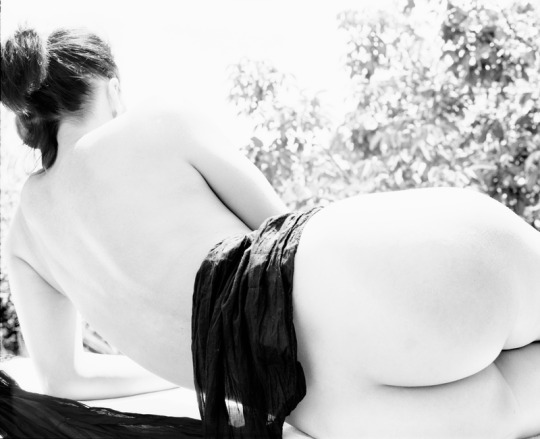
Nu HK - Mamya RB67 Ilford PanF+
#eric cucchi#bw photography#photography#analog photography#analog#black and white#nu#mamiya#mamiya rb67#6x7#120 film#medium format#ilford
109 notes
·
View notes
Text

Venezia, Rio della Salute
#eric cucchi#bw photography#photography#analog photography#black and white#venezia#analog#venise#venice
117 notes
·
View notes
Text
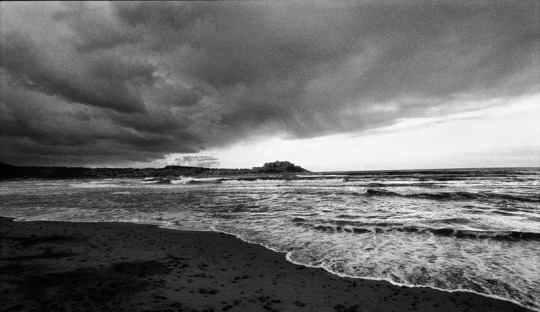
Corsica - orage, storm
#eric cucchi#bw photography#photography#analog photography#black and white#analog#corsica#landscape#storm
101 notes
·
View notes
Text
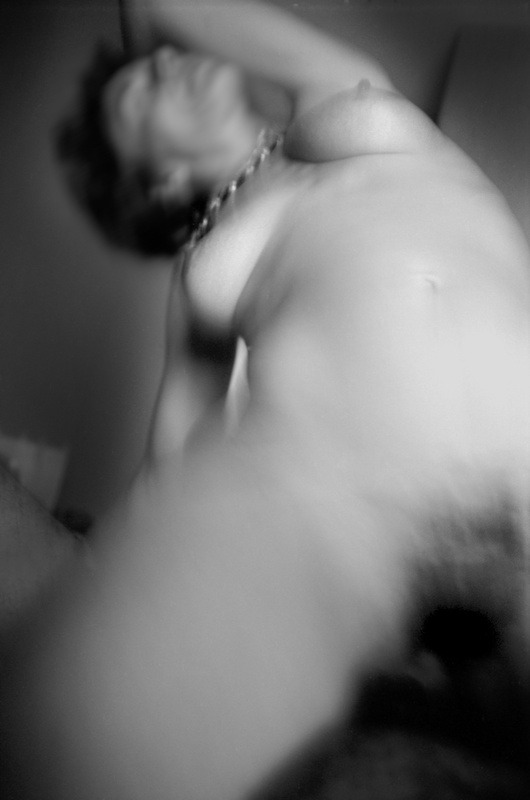
Nu - Nikon FM2 TMX100
90 notes
·
View notes
Text

Danse
127 notes
·
View notes
Text

Lignes - Kodak Tmax100 - NikonFM2
#eric cucchi#bw photography#photography#analog photography#black and white#analog#nu#kodak tmax 100#nikon fm2
69 notes
·
View notes
Text
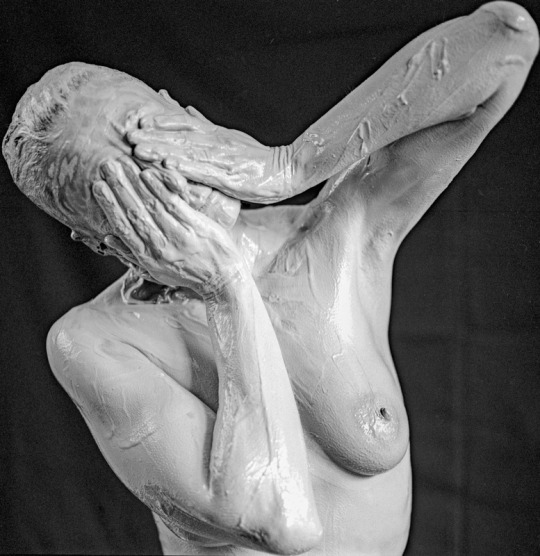
Argile. Mamiya RB67 Fuji Neopan 400
99 notes
·
View notes
Text

Corsica - Corté - Nikon FM2 20mm f2.8
62 notes
·
View notes